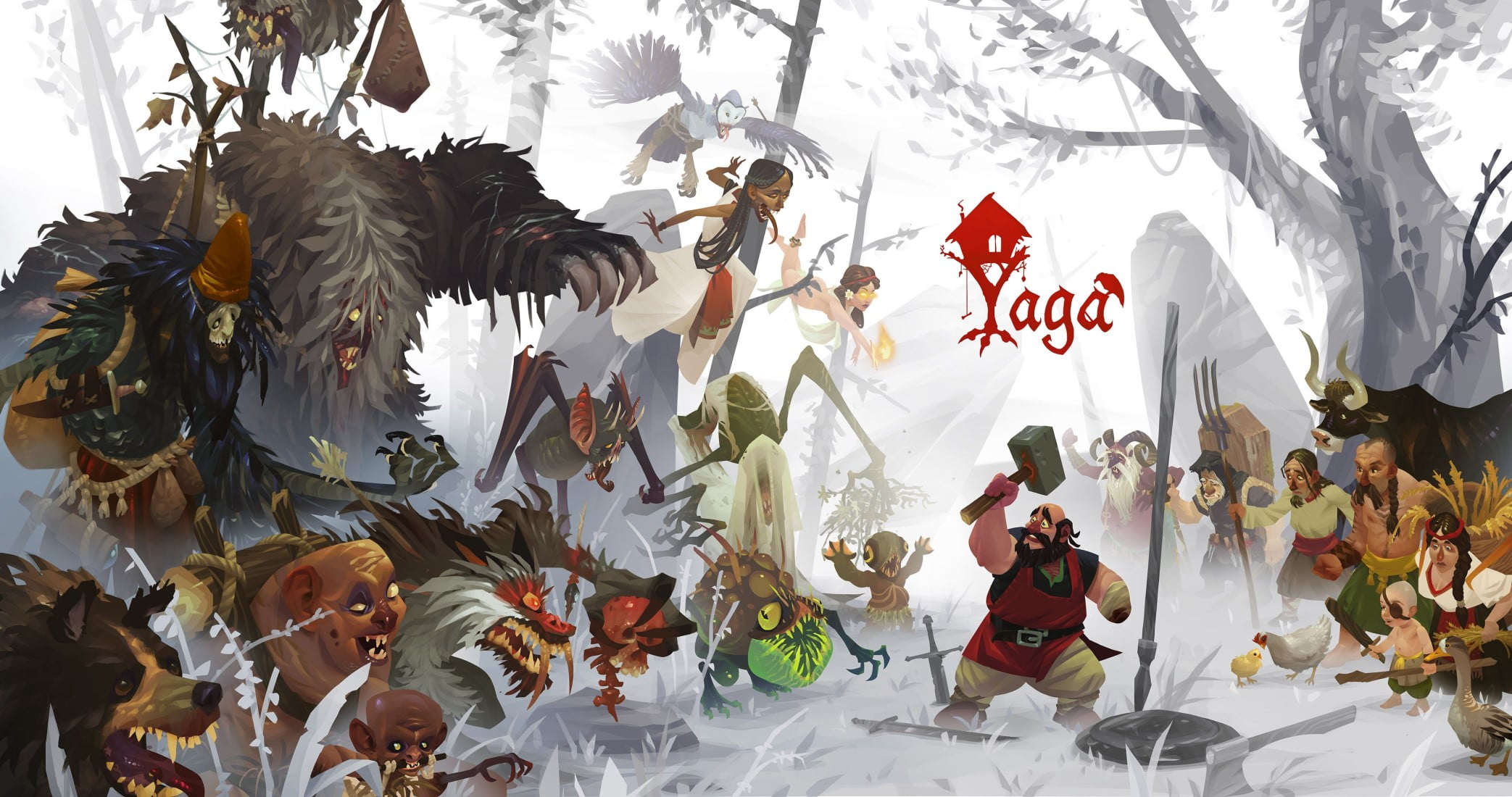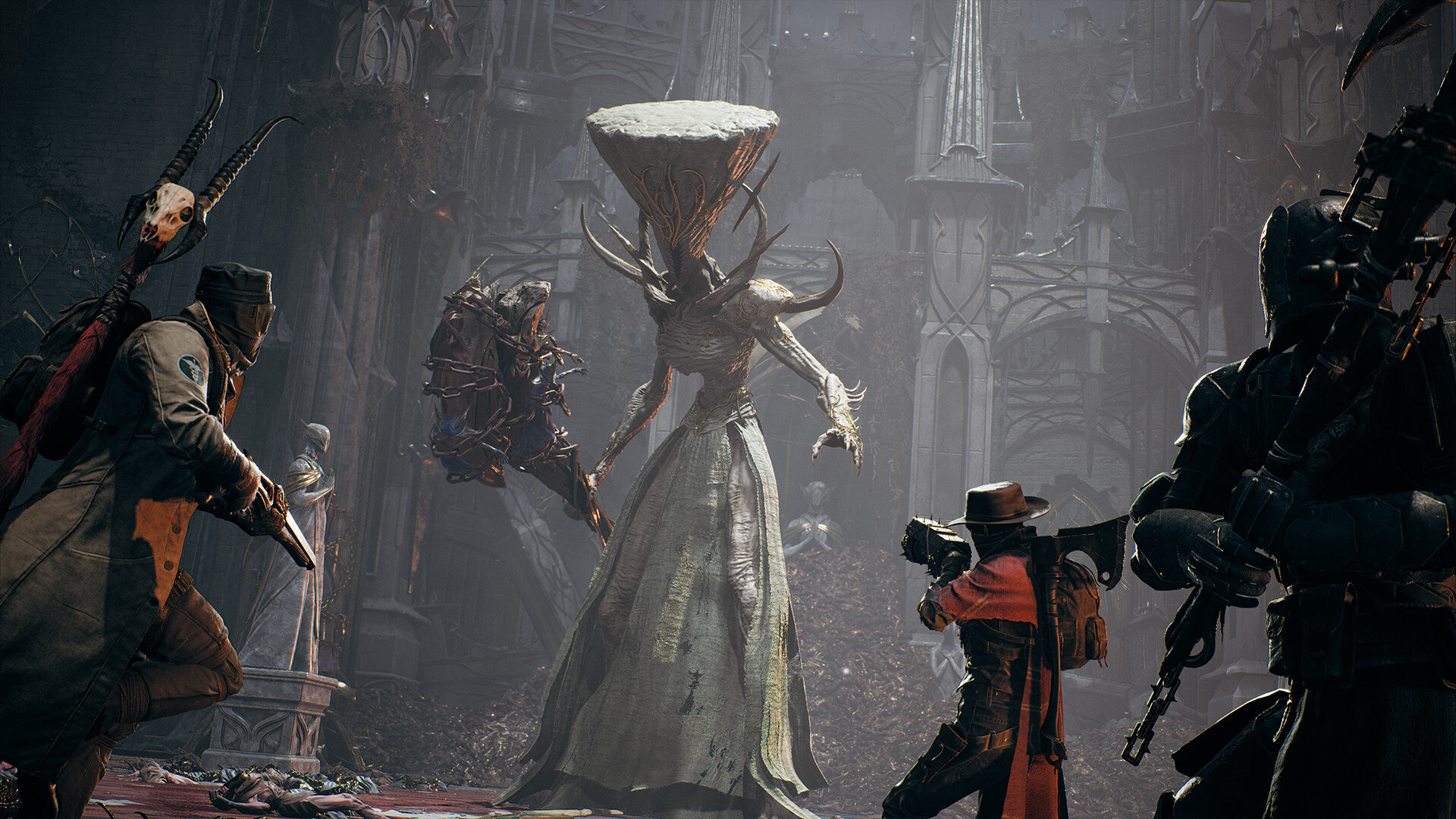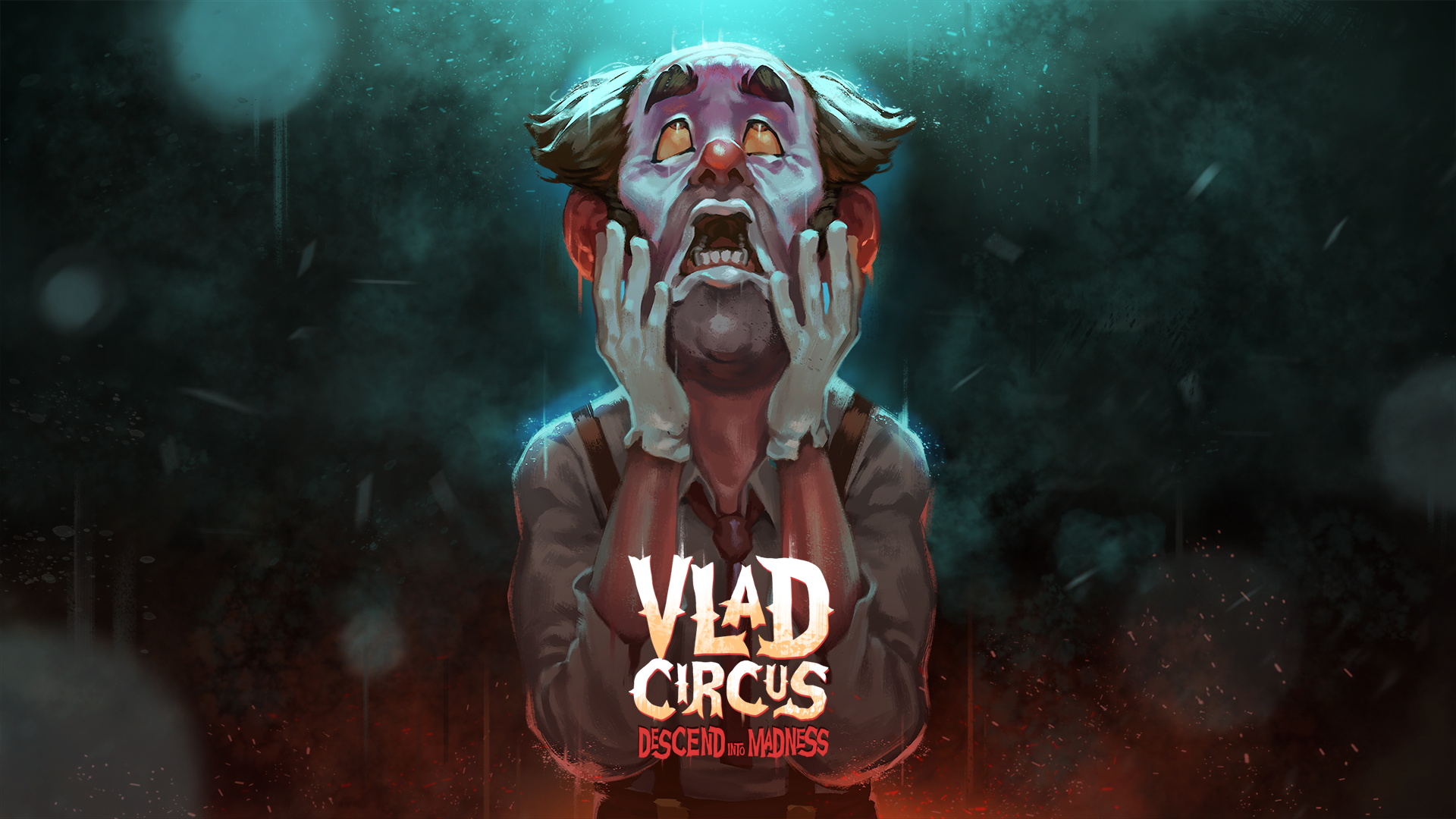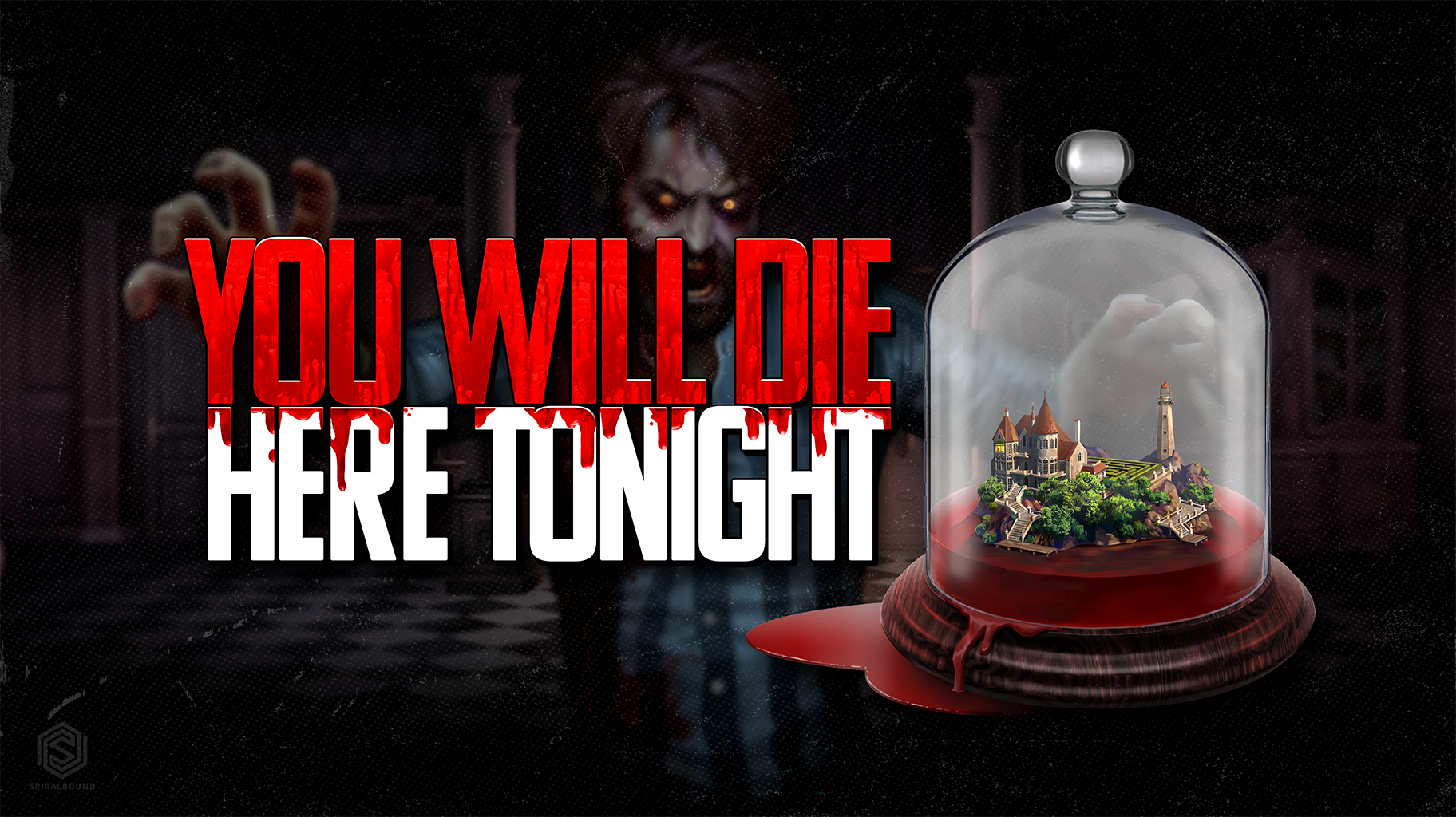
Yaga Review- Arm Yourself for a Folktale
Developed by Breadcrumbs Interactive
Published by Versus Evil
Available on PS4, Xbox One, Nintendo Switch, PC, Mac, Linux, iOS
MSRP $24.99
Any media that rehabilitates the image of Baba Yaga is already in good standing with me. For too long the mainstream media has scoffed at the idea of a kindly magic lady not being evil. We even have a holiday dedicated to insulting an entire race of green people. Thankfully we have games like Yaga that are not afraid to speak the gospel. This game is told from the perspective of Mama Baba Yaga herself, in conference with three crones, as she relays the story that you are about to play through. And not only are they going to tell your story, they’re going to do it in some less-than-perfect-but-still-much-appreciated rhymes.
In Yaga you play as Ivan, a humble blacksmith in a small ~12th-16th century Russian village. After the Tzar is cursed by Baba Yaga’s mana (channeling this magic through some kind of Mama Baba Yaga Mana Tuba), he is fated to lose his throne at the hand of the unluckiest person in his kingdom. That person is Ivan, who after an encounter with a witch has lost both his luck and his arm. Since during the Baba Yaga drama, it is revealed the Tzar is forbidden from outright killing Ivan. To get around this caveat, he decides to send him on an impossible mission. Now, in order to return to his village and overcome his Baba Yaga trauma, he must go on a noble quest and kill lots of enemies and pick up lots of stuff and help people out with menial tasks that they could do on their own but will allow you to do so you don’t get bored. You know the deal.

The setting for Yaga is that of a simple traditional Eastern European folklore. The atmosphere is like many games that take place in a small Slavic town. Ivan’s charming village is home to a number of ye olde towne folke. Other than a Russian Orthodox bishop and some kind of Romani fortune teller, it is no different from any other fantasy town.The village of poor farmers and tarboosh-wearing priests is surrounded by various regions of mythical creatures. I’m sure in the folklore these creatures are rare and secretive, but in Yaga, the areas outside of the village are a war of all against all. Groups of marauders ambush you and monsters crawl from the black abyss at just about every turn. For a colorful setting with a friendly visual style, it seems like these villagers are the last people on an earth overrun with beasts and even some Baba Yaga fauna.
The traditional Russian monsters you encounter are of course the best part of the setting. While the majority are bizarre demons, ranging from the basic goblin to the scarecrow-thing-that-sneezes-and-shoots-spears-at-you, the most interesting are the ones who you can talk to. Channeling The Witcher, in Yaga you are frequently given the option to be diplomatic with certain monsters. Functionally this is no different than any of the other humans you encounter, but it offers an interesting change in quest narratives. Matched with the minor RPG elements, you have the option to either help or kill these specific monsters.

Yaga is a top down side scrolling game. A Baba Yaga diorama, if you will. Throughout the course of this Baba Yaga panorama saga, you travel through a small variety of areas, like farmland, swamp, and field. But they all play exactly the same, there’s barely any difference other than visuals. Basically every area is a procedurally generated labyrinth with a few odd quests, and though this certainly isn’t a dealbreaker, some more love and care put into the zones would go a long way.
Conceptually, Yaga is actually pretty novel. I’ve played RPGs where you are a warrior bard, a warrior shopkeeper, even a warrior cook. But a blacksmith is an interesting idea for a class of fighter. As a master craftsman, Ivan is able to overcome his challenges by means of smithing new weapons. Crafting is the main feature of Yaga. Your primary weapon is a hammer, which for some wonderful but unexplained reason you can throw and catch like its Mjölnir. As you progress through each area you collect both ores and bits of enchanted garbage. In between levels, you may smelt them together into new and powerful creations. This feature was pretty cool, especially as the game progressed and I began to find more interesting parts. By the end, I had a Mjölnir that did indeed shoot lightning and fly around foes repeatedly hitting them like an angry bee.

There are some secondary weapons as well, like a grappling hook, power fist, and a Baba Yaga katana (no, not really), but for the most part, you just use your main hammer. These secondary weapons are interesting but ultimately it is not worthwhile to use them in combat. To attack using these tools causes you to consume some of your stamina bar, Standard stuff, right? The caveat is that your stamina bar also functions as a sort of overshield, allowing you to take some damage before beginning to lose health. Yaga is often pretty difficult, requiring you to fight up to ten enemies that deal considerable damage, and Ivan does not seem to get any recovery i-frames. It’s not worth using some short range hook-arm and risk losing a ton of health, especially when you have a perfectly good magic hammer. Trying to use the close range special weapons, often slower than the hammer, ended with me rolling away from a group of enemies pursuing me like a Baba Yaga Bahama/ Tijuana conga.
The main problem with combat is that the Yaga devs needed a way for you to continue needing to create a new hammer. Rather than, I don’t know, allowing the upgrading of the hammer, they introduced luck. The luck mechanic seemed kind of obtuse. Once you reach maximum bad luck, an astral projection of the witch from the beginning comes and smashes your equipped hammer and steals some of your magic trash. The problem was that basically every activity outside of swinging a weapon caused your bad luck to rise. Using a consumable item, even a healing item such as regular bread, would cause you to gain bad luck for a period. As did choosing a non-noble dialogue option, falling for a ruse by some weird Russian folklore creature, even getting blessed by the town bishop was a cursed act.

This severely restricted my playstyle. Instead of trying the interesting dialogue Yaga had to offer, I would stick to the kind option the majority of the time. Instead of using the dozens of magic consumable items to alter gameplay, I would adamantly refuse to use anything other than the basic healing bread. This all in the service of preventing the mean ghost from breaking my primary weapon, which would still happen frequently. It was infuriating. Occasionally, after putting all of my best materials into a new hammer, I would almost immediately encounter the smash ghost. Meaning I would have to go through the entire level, or die and risk losing some random items, in order to go and craft another.
Overall Yaga is fine. A bit repetitive, but the charming style makes up for it. If you categorize it as a roguelite game, similar to Binding of Isaac and FTL, then I think it holds up pretty well. This is a game meant to be played a few times through, apparently with several endings. While I don’t have the time to do this, I can see the appeal. If you find yourself getting bored, well. Maybe smoke some Baba Yaga marijuana.
Overall
3.5-
Charming and replayable, Yaga makes up for its occasional clumsiness by being fresh and interesting.




